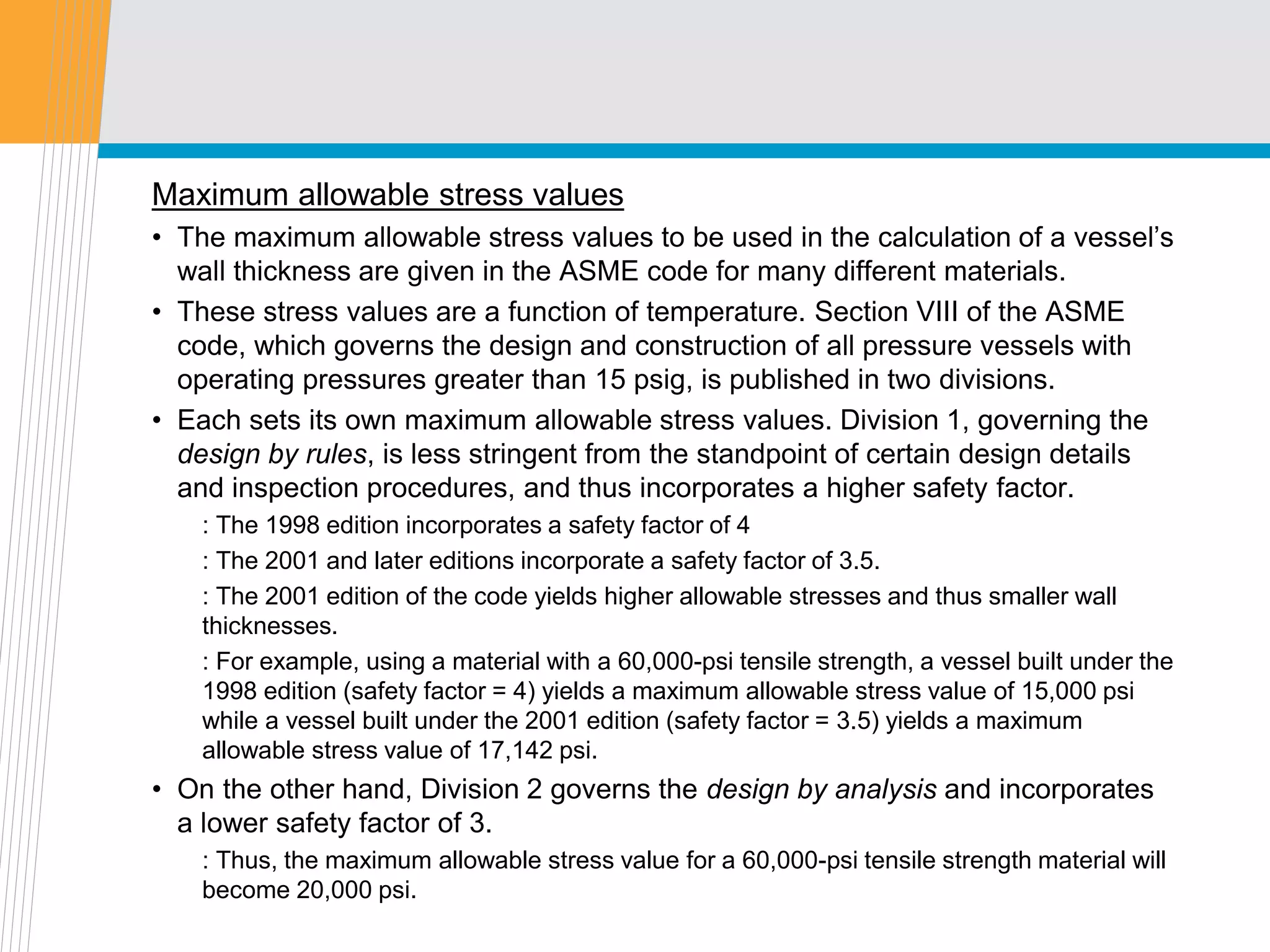This document provides an overview of key concepts for the mechanical design of pressure vessels, including determining design pressure and temperature, selecting material and maximum allowable stress values according to the ASME code, calculating wall thickness using formulas, adding corrosion allowance, common head and vessel types, estimating vessel weight, and outlining typical pressure vessel specification requirements. The purpose is to present concepts a project engineer needs to understand to properly specify and purchase pressure vessel equipment for the oil and gas industry.




























